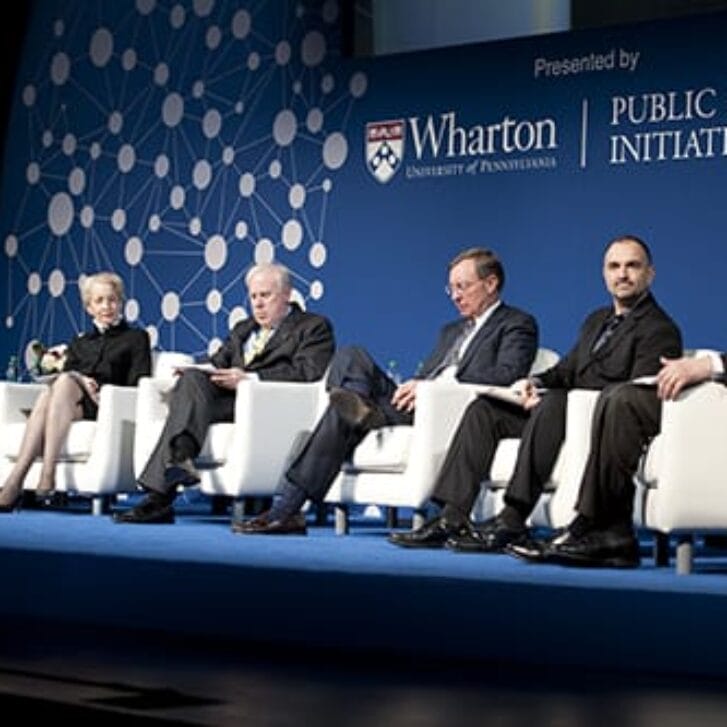At the recent Wharton Economic Summit in New York, I had the opportunity to moderate a panel on innovation featuring five distinguished speakers from different industries. The striking thing was how little we spoke about technology.
Panelist Lady Barbara Judge, CW’66, who has served as Securities and Exchange Commissioner in the U.S. and chair of the U.K.’s Atomic Energy Authority and Pension Protection Fund, pointed out that the biggest innovation in the energy sector today, hydraulic fracturing of shale gas, isn’t a new idea at all. Only when conditions were right did it become a transformative development. In turn, I might add, it’s creating a need for innovation in environmental protection and regulatory processes to ensure the economic benefits of fracking exceed the social costs.
John F.W. Rogers of Goldman Sachs talked about innovation in a field where no one would expect it: philanthropy. His firm rethought its entire approach to philanthropy in designing the 10,000 Women and 10,000 Small Businesses programs, leveraging the skills of its employees and its network of partners to empower entrepreneurs in ways money alone can’t.
The bulk of our conversation, though, wasn’t about companies innovating at all. It was about government.

Prof. Kevin Werbach; Lady Barbara Judge, CW’66; Ted Dintersmith; George Damis Yancopoulos; and Jay J. Schnitzer (left to right)
The single biggest driver of the innovation economy is our educational system. If the graduates of our high schools, colleges and graduate programs don’t have the skills or the mentality to innovate, it’s unlikely they will ever be in a position to gain them later. We need students of all genders, ethnicities and socioeconomic levels attuned to creativity, experimentation, risk-taking and making data-driven decisions. We need entrepreneurs willing to strike out and found new firms, but we also need internal entrepreneurs pushing for change within organizations.
Unfortunately, as venture capitalist Ted Dintersmith noted in one of the most viral remarks of the event, our K-12 schools today are better at crushing capabilities for innovation than nurturing them. And I’m sad to say that many well-intentioned efforts to reform them make this worse by focusing relentlessly on standardized tests and the most easily measurable results in a few limited areas of the curriculum.
When it comes to research and development, the story about government’s role is more positive. Many of the biggest technological innovations of the past century came about through government funding or incentives. Jay Schnitzer, who until recently was director of the Defense Sciences Office at the Defense Advanced Research Projects Agency (DARPA)—which among other things, catalyzed the development of the Internet—spoke of how government can nurture innovation in areas where the private sector can’t, or increasingly, won’t. And government also plays a protective role in some forms of private-sector innovation. As George Yancopoulous of the biotech company Regeneron pointed out, the regulatory structure of clinical trials, imperfect as it may be, allows pharmaceutical companies to pursue innovative medicines because the health of patients is protected.
We could have covered plenty of additional topics in more detail, including immigration, intellectual property and corporate culture. All of them have a much to do with accelerating or retarding innovation as any technical breakthrough does. There’s little doubt that innovation will be a key factor in the success of both companies and nations in the years to come, but it’s time to think about it in broader terms than new technology.

























